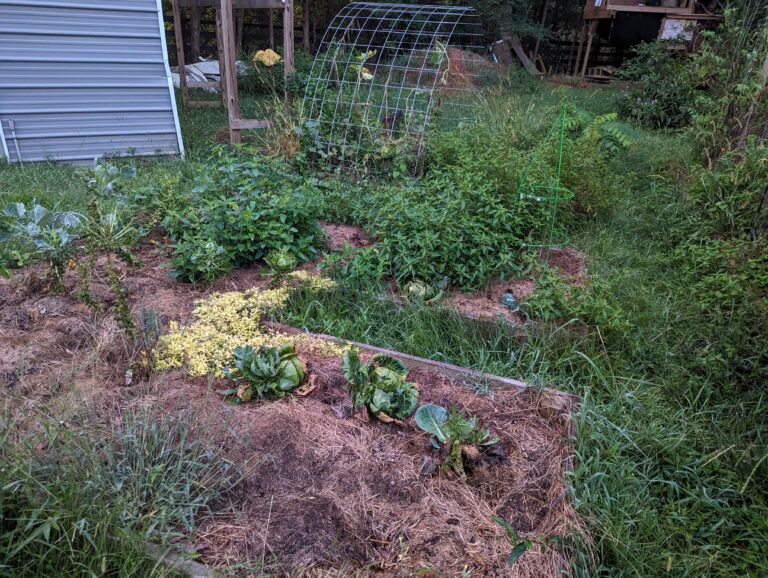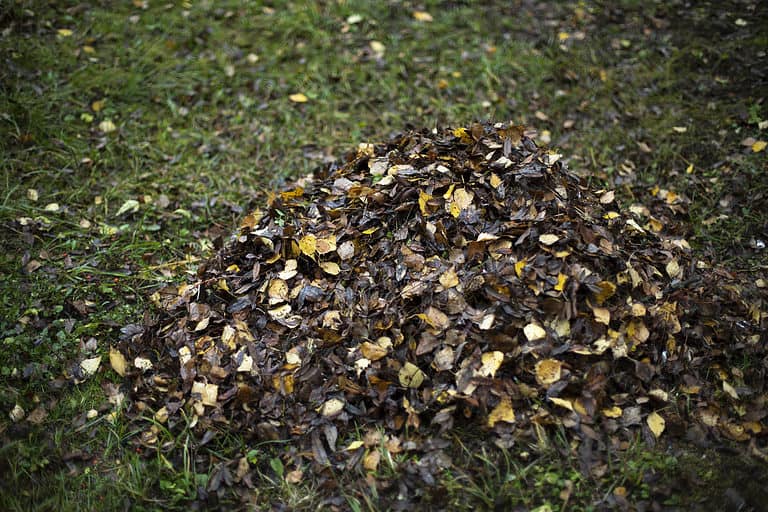Embrace Nature: Top 2024 Trends in Gardening for Sustainable Living
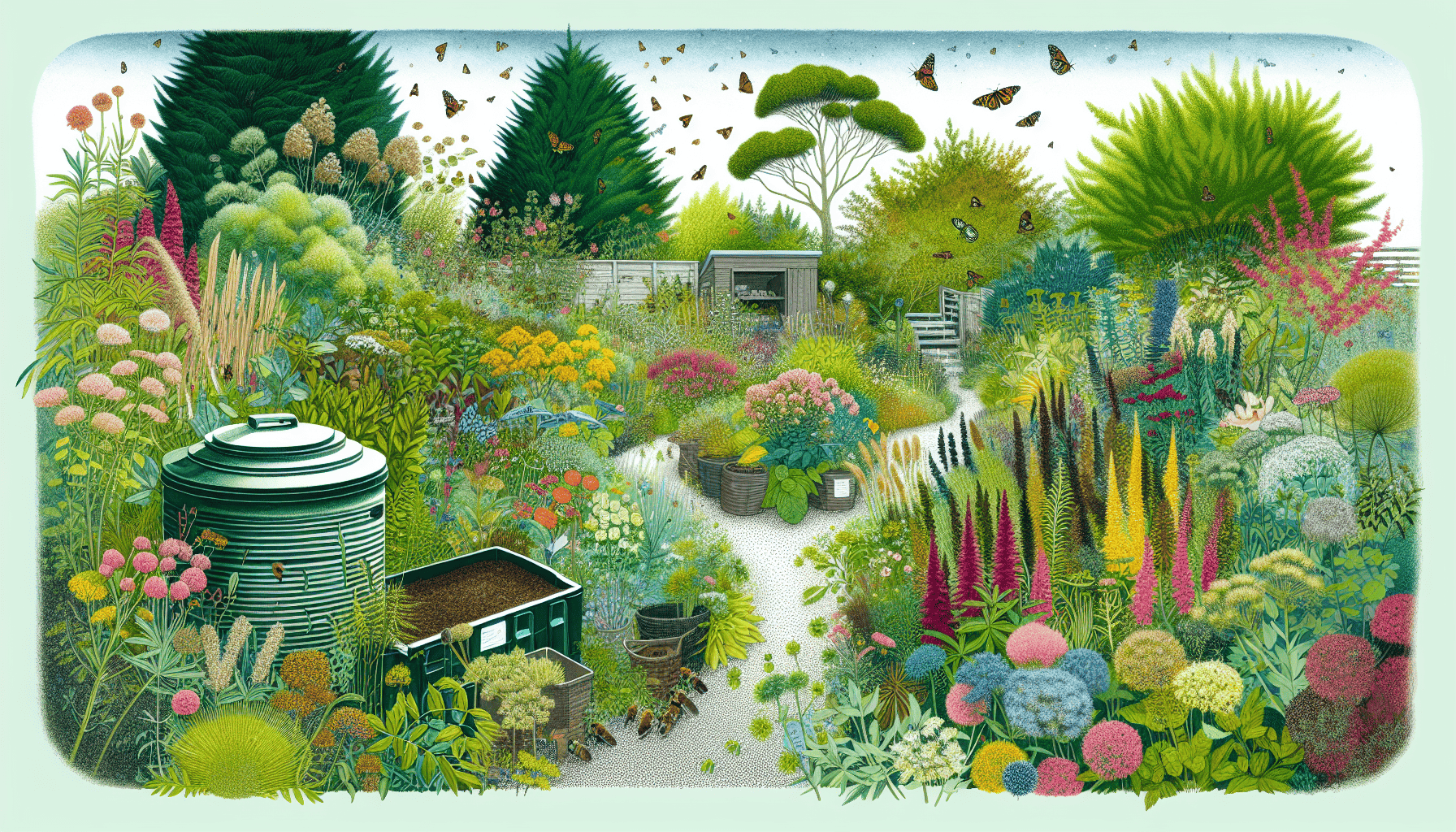
Curious about the top gardening trends for 2024? This article delves into the most anticipated movements in the world of gardening, emphasizing a surge in integrating native plants and advancements in maintaining soil health. It covers innovative water-saving techniques and other sustainable practices that are expected to redefine garden landscapes. Prepare to invigorate your garden with these forward-thinking and eco-friendly strategies.
Key Takeaways
Incorporating native plants in gardens promotes sustainability, supports pollinators, and prevents invasive species.
Adopting practices such as composting, mulching, and using natural fertilizers significantly enhances soil health and boosts plant growth.
Implementing water-wise gardening techniques, including selecting drought-tolerant plants and using efficient irrigation systems, conserves water and reduces runoff.
Going Native: The Rise of Native Plants in Sustainable Gardens
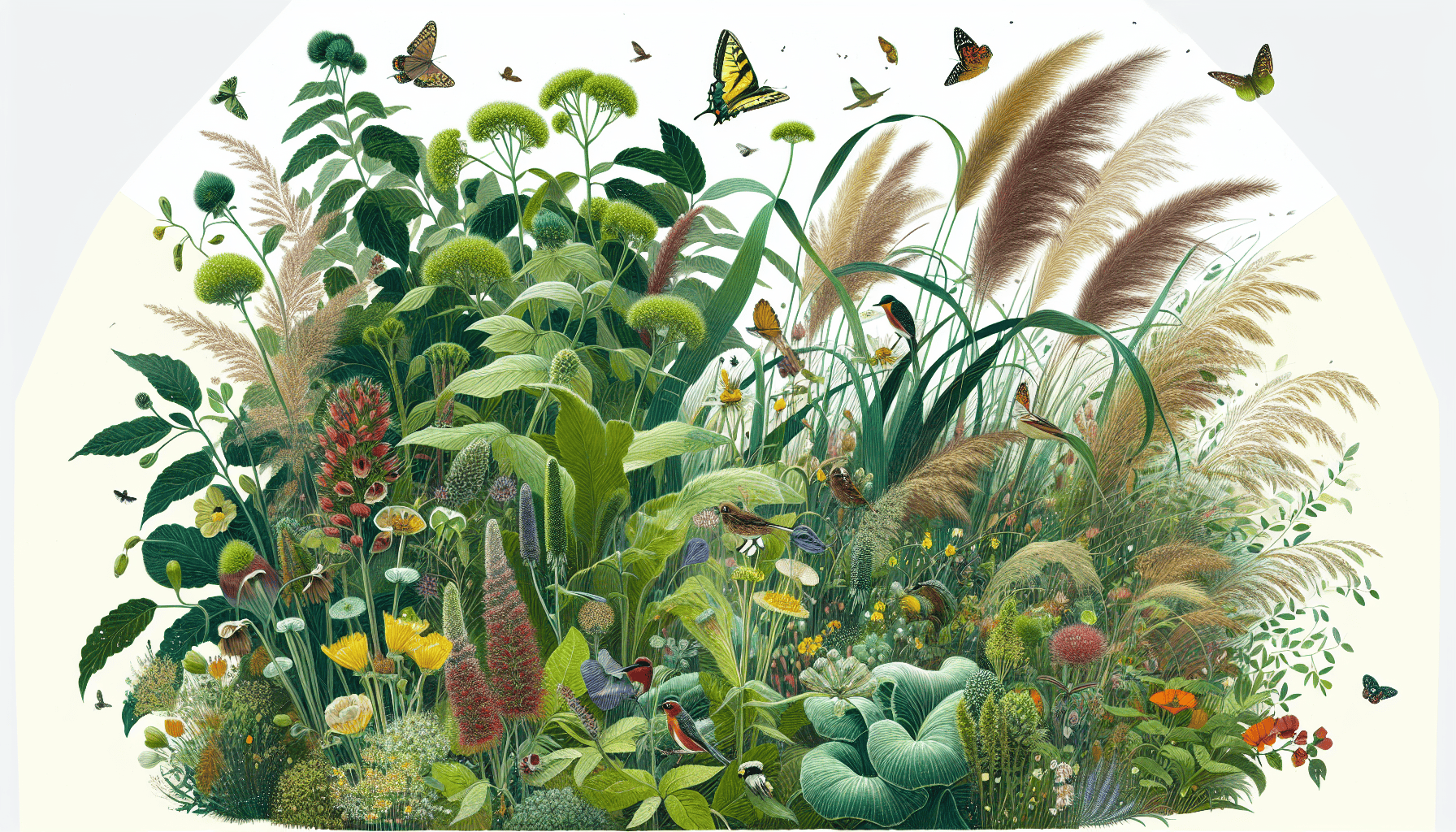
Embracing native plants in your garden is a powerful way to promote sustainability. Here are some reasons why:
Native plants are well-adapted to their environment and require less water and maintenance.
They play a crucial role in stable ecosystems, supporting biodiversity and local wildlife.
Native plants help prevent the spread of invasive species.
By incorporating native plants into your garden, you can create a beautiful and sustainable landscape.
Creating a resilient and sustainable garden becomes possible when you integrate native plants like Wisteria macrostachya, which thrives in various regions. These plants attract birds, bees, and butterflies, providing food and habitat for declining wildlife species.
We now turn our attention towards sustainable garden ideas, focusing on the benefits of the best plants for sustainable gardening, which are native plants, ideal for growing plants with minimal environmental impact.
Attracting Pollinators and Beneficial Insects
Creating a garden bursting with life is a cornerstone of sustainable gardening. Incorporating native plants is vital for drawing in pollinators and beneficial insects necessary for the successful pollination that leads to fruit and seed development. Plants such as Monarda, coneflowers, and black-eyed Susans are particularly effective due to their expansive, flat flowers which attract bees and butterflies. Meanwhile, hummingbirds favor the tubular blooms of trumpet-shaped flora.
To provide an unbroken food source of nectar and pollen throughout the changing seasons, it’s important to have plants that flower at different times. By starting off with catmint in springtime followed by butterfly bushes and sturdy varieties of hibiscus during summer months—and concluding with asters towards late summer into fall—you can ensure your garden serves as a consistent sanctuary for these invaluable insects all year round.
Supporting Local Wildlife
Incorporating native plants into your garden is crucial for the support and sustenance of local wildlife. These plants provide critical habitat, nourishment, and protection for an array of species. Birds and insects especially depend on these indigenous plant species due to their coevolutionary relationships that highlight the profound bond between the area’s native flora and fauna. Notably, many ground-nesting bees need access to patches of soil without mulch to establish their nests, which underscores the significance of integrating a variety of habitats within your garden layout.
By introducing native plants into your landscape, you can:
Foster a robust ecosystem teeming with diverse wildlife
Elevate biological diversity
Aid in enhancing the resilience and healthiness of your surrounding natural environment
Preventing Invasive Species
Incorporating native plants into your garden plays a crucial role in halting the advancement of invasive species. These indigenous varieties are adept at outperforming their non-native counterparts, which is essential for maintaining biodiversity and equilibrium within regional ecosystems.
Gardeners who opt for native plants can:
effectively halt the encroachment of invasive species
safeguard local wildlife and plant life
guarantee that their gardens contribute to a sustainable and balanced natural landscape.
Soil Health Matters: Best Practices for Healthy Soil
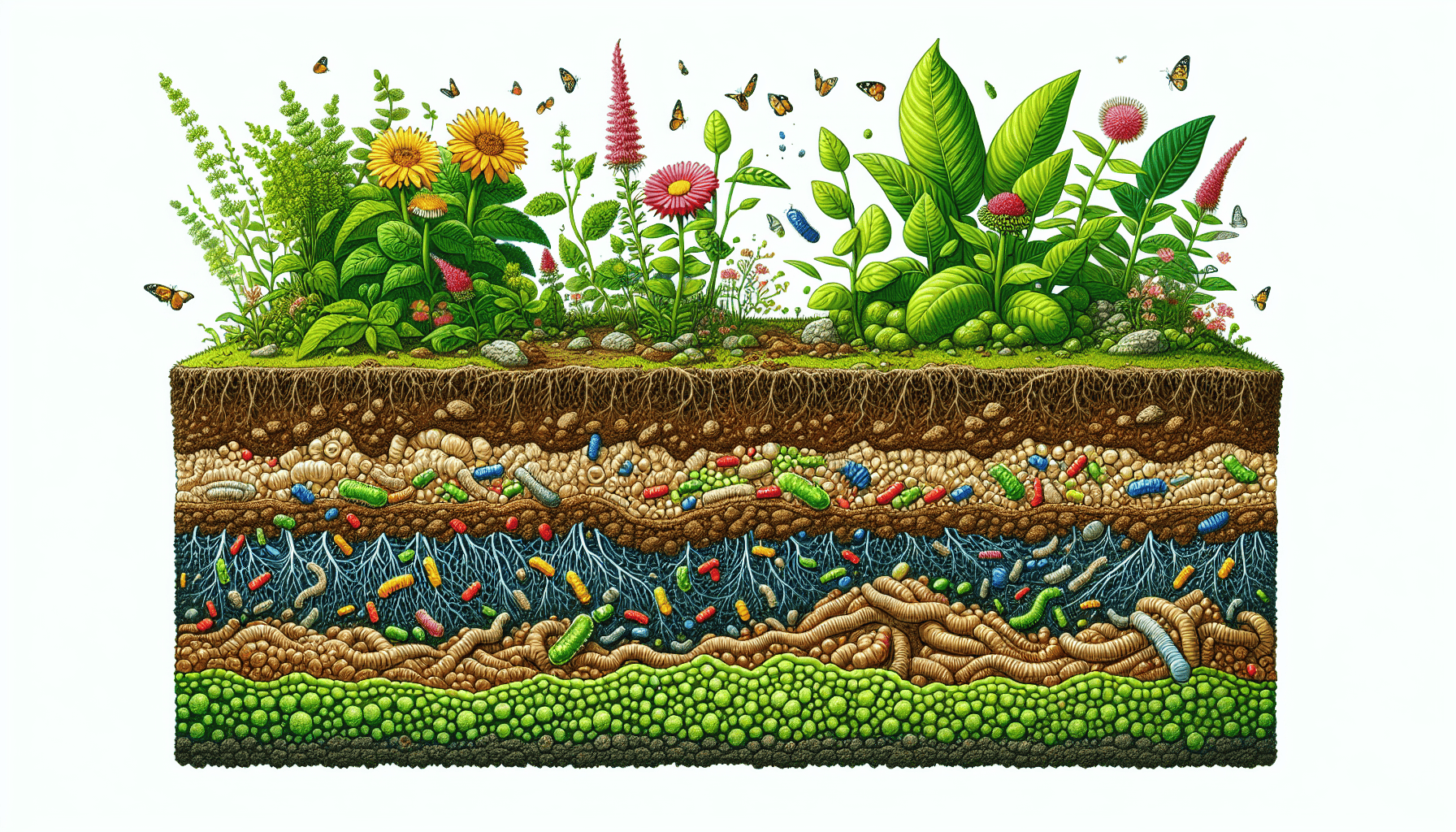
A sustainable garden, flourishing with life, is underpinned by the health of its soil. This crucial aspect fosters vigorous plant development, sustains the cycles of nutrients in their natural state and bolsters a garden’s ability to withstand extreme weather conditions. Yet conventional methods such as tilling can harm beneficial soil organisms and cause progressive damage to the soil structure. For preserving and enhancing healthy soil, experts advise reducing disturbance to the ground, increasing coverage over it, and diversifying its biological makeup.
Native plants with deep root systems are instrumental in reinforcing soil integrity by combatting erosion and conserving structural stability—vital functions especially in regions prone to intense precipitation or snowmelt events. Subsequently, we will delve into some optimal strategies for nurturing healthy soils extensively.
Organic Matter and Composting
Implementing compost and organic matter into your gardening routine can profoundly improve the fertility and structure of your soil. The process of composting boosts microbial activity in the soil, which aids in nurturing healthier plant development by enriching garden beds with several advantageous features.
Improved penetration of water
Enhanced moisture retention
Increased levels of carbon
Greater overall biomass
Organic material plays an essential role in sustaining the well-being of soil by affecting its physical, chemical, and biological attributes. By consistently adding compost to your garden’s earth, you ensure that its productivity and fertile state are maintained.
Mulching Techniques
Applying organic mulch in your garden serves multiple purposes: it helps to maintain consistent soil temperatures, locks in moisture, deters weed growth and fosters improved fertility and texture of the soil as time goes on. Preserving leftover crop remains atop the ground after harvest offers protection from water erosion while enhancing the health of the soil.
Incorporating nature’s offerings such as dropped leaves and woody fragments into your garden doubles as both mulching material and shelter for beneficial insects that are essential within avian ecosystems. The practice of mulching is a straightforward but powerful method to boost your garden’s sustainability.
Natural Fertilizers and Amendments
Utilizing organic fertilizers and soil enhancers is crucial for preserving the sustainable health of your garden’s soil while also addressing any nutrient shortages. These natural amendments provide critical nutrients, including nitrogen, phosphorus, potassium, and various micronutrients that are indispensable for the vigorous growth of plants.
Incorporating legume plants such as peas and beans into your garden through intercropping strategies can bolster the soil with naturally fixed nitrogen. This diminishes the dependency on external fertilizer inputs. The adoption of these natural fertilizing methods fosters a more robust and thriving ecosystem within your garden.
Water-Wise Gardening: Conserving Water and Reducing Runoff
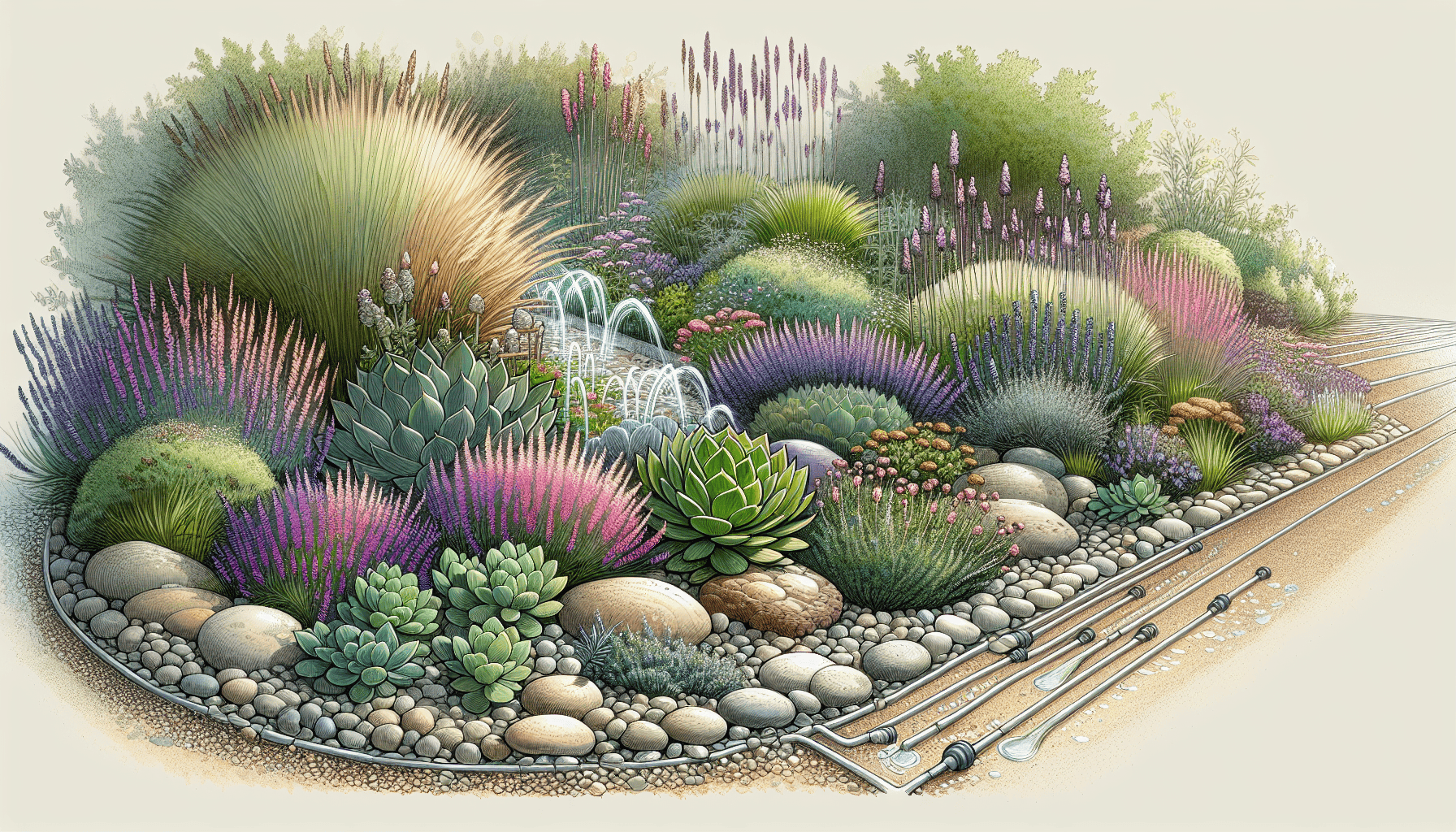
As water continues to be a valuable resource, the practice of water-efficient gardening has never been more critical. Opting for plants that are tolerant of dry conditions, using effective watering systems, and capturing rainwater can greatly diminish both the amount of water used and excess runoff in your garden.
By organizing your plants into hydro-zones based on similar watering needs, you enable targeted irrigation that caters to the unique demands of each zone. In what follows, we will examine some effective tactics for conserving water while maintaining a lush garden.
Drought-Tolerant Plants
Opting for plants that can endure dry conditions is an excellent strategy to reduce water usage in your garden. Since perennials often need less watering compared to annuals, they are great choices for creating a landscape with efficient water use. For those looking to add drought-tolerant flowers, consider integrating options such as lavender, sundrops, purple coneflowers, yarrow, and baptisia into your green space.
These particular species have earned their reputation by flourishing with only a modest amount of water.
For shrubs suited to conserve water in gardens, you might want to explore varieties like spirea, ninebark, and forsythia.
Gray dogwood and junipers.
By adding these types of vegetation into the mix of your outdoor area, it ensures that it becomes more durable against drought while simultaneously being conscientious about water consumption.
Rainwater Harvesting Systems
Utilizing rainwater harvesting systems offers a powerful means of collecting, conserving, and employing rainwater for irrigating landscapes. From an inch of rainfall, a roof spanning 1,000 square feet has the capacity to accumulate upwards of 620 gallons of water—underscoring its substantial potential for saving water.
In your garden, integrating these rainwater collection systems diminishes dependence on city-supplied water while promoting prudent use and preservation of resources. Green roofs bring forth extra advantages by improving drainage and mitigating flooding risks in times of intense precipitation.
Efficient Watering Practices
Implementing smart watering techniques, like the use of drip irrigation, can enhance the conservation of water and foster drought resilience in your garden. By directing water straight to the soil with these systems, you cut down on evaporation and help prevent diseases by maintaining dry foliage.
Tailoring watering to the specific requirements of each plant type promotes the development of deeper roots, contributing to a landscape that is better equipped against drought. The adoption of such efficient watering methods saves both time and resources while also decreasing upkeep needs for your garden—this harmonizes with ambitions towards sustainable living practices.
Green Thumb, Smaller Footprint: Reducing Your Garden’s Carbon Impact

To cultivate a sustainable garden with a diminished carbon footprint, embracing certain strategies is vital. Implementing these methods will not only contribute to climate change mitigation, but also foster the development of an enduring and eco-friendly space.
Utilize indigenous flora
Cultivate trees alongside bushes
Employ materials that are kind to our ecosystem
Limit the extent of grass-covered areas
In pursuing these approaches, you’ll Your commitment to sustainability within gardening.
Now let’s delve into tactics designed to reduce your garden’s contribution to carbon emissions effectively.
Planting Trees and Shrubs
By absorbing and sequestering carbon dioxide, trees and shrubs contribute significantly to combating climate change. Their presence in garden environments is crucial for offsetting emissions of greenhouse gases, thus playing a key role in carbon capture.
Creating a garden enriched with varieties like Bur oak, American bayberry, and Ginkgo not only has environmental benefits but also boosts the aesthetic appeal and biological diversity of the space.
Eco-Friendly Materials and Containers
Choosing sustainable materials and containers for your garden can greatly diminish waste production and the reliance on plastic. Containers that break down naturally, crafted from coir, paper fibers, or rice hulls, offer a superb substitution to traditional plastic pots.
Incorporating organic pots constructed of substances such as terracotta or coconut coir into your gardening practices can also play a significant role in lowering the carbon footprint associated with your garden by minimizing plastic consumption. These environmentally friendly alternatives not only foster positive environmental impact but are also in harmony with the increasing consumer preference for products related to sustainable gardening.
Reducing Lawn Space
Shrinking the area of your lawn is an effective method for decreasing the carbon footprint of your garden. The upkeep of traditional lawns demands a lot of water, frequent use of fertilizers, and regular mowing — all activities that emit greenhouse gases. If you turn areas previously occupied by grass into gardens with varied plants, it cuts down on the need for these high-consumption practices.
You can replace lawns with ground covers or gardens and even add elements like patios or decks known as hardscaping to minimize chemical usage while bolstering ecological health. By expanding patio spaces and developing larger outdoor living areas, not only do you substantially reduce emissions linked to maintaining lawns, but also transform your garden into an enjoyable space rich in utility.
Companion Planting: Maximizing Garden Health and Productivity
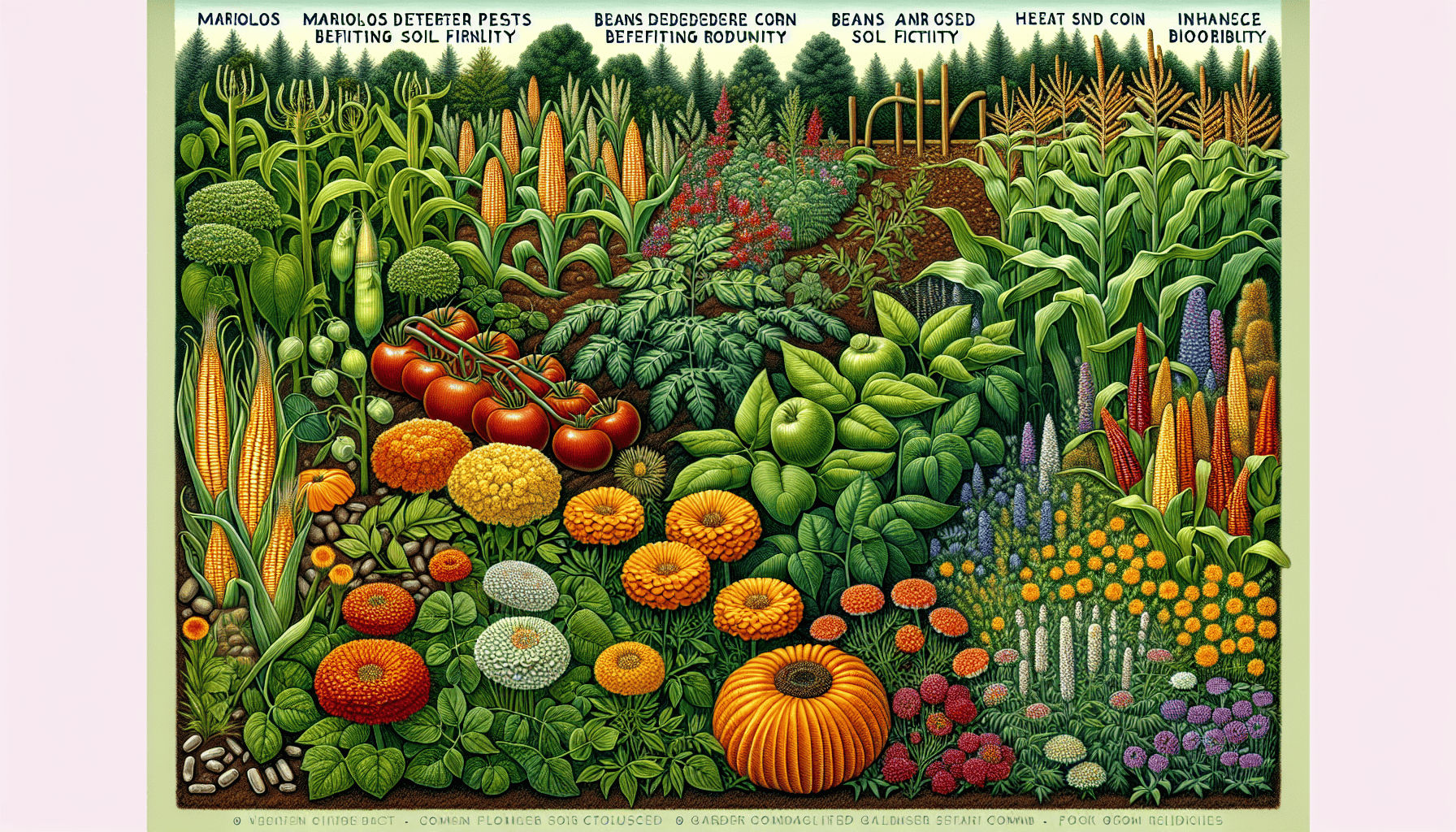
The practice of companion planting involves cultivating advantageous plants in proximity within the garden. This age-old technique is designed to bolster both the wellbeing and output of a garden through its natural pest deterrence, suppression of weeds, and enhancement of crop production. By carefully selecting plant companions, an ecologically balanced environment can be established that flourishes without resorting to chemical treatments.
Companion planting elevates not just the productivity, but also encourages ecological variety by drawing beneficial insects which aid in pollination. In our subsequent discussion, we will delve into how this method serves your garden’s needs and provide actionable guidance for incorporating it into your own gardening efforts.
Benefits of Companion Planting
Companion planting offers a multitude of advantages for the garden, such as:
Maximizing the output by cultivating various crops together in close quarters, thus making efficient use of limited gardening space
Intentionally selecting and situating plants to ward off pests and prevent diseases
Contributing to stronger and healthier plant growth
Diminishing reliance on synthetic pest control measures
Certain flora play a pivotal role in controlling insects through their natural scents that repel harmful organisms, by drawing in beneficial predatory bugs or even visually distracting parasites away from primary crops. Companion planting is effective at hindering weed proliferation, which lessens competition over vital nutrients and diminishes upkeep tasks. In essence, this method bolsters soil healthiness, deters weeds from thriving around crops thereby amplifying overall productivity.
Examples of Successful Plant Pairings
In the realm of gardening, numerous examples exist showcasing effective combinations of plants. A time-honored illustration is the Three Sisters method, where pole beans, corn, and winter squash are grown together. This approach enhances yields and promotes sustainability in gardens through companion planting. To safeguard cabbage crops from pests without resorting to chemical pesticides, gardeners often interplant cabbages with fragrant herbs such as basil and rosemary.
Companion planting offers Advantages by pairing cucumbers with radishes or sunflowers — these companions provide necessary shade which supports improved growth for cucumbers. When basil is co-planted alongside tomatoes, cucumbers or peppers, it acts as a natural deterrent against flies, mosquitoes, and tomato hornworms, highlighting how strategic plant pairings can offer multiple benefits within a garden setting.
Implementing Companion Planting in Your Garden
Incorporate companion planting into your garden to create an environment where a variety of plants support and enhance one another. Evaluate the space in your garden, whether it’s comprised of raised beds, containers or conventional plots, selecting plant species that are known for their synergistic effects when used in companion planting.
To maximize the benefits of these plant relationships within your garden design, consult companion planting guides to inform the spatial arrangement of your flora. This will foster better growth outcomes and higher yields from each plant. After setting up this system, keep a watchful eye on how the plants interact with one another over time. Be prepared to make necessary adjustments to their positioning if needed so as to maintain a beneficial partnership among them.
Creating a Wildlife Haven: Designing Gardens for Birds, Bees, and Beyond
Creating a garden that serves as a sanctuary for birds, bees, and various other forms of wildlife is instrumental in promoting biodiversity and fostering a dynamic ecosystem. The integration of varied habitats, plentiful food sources, and the use of safe natural elements can transform your space into an oasis teeming with life. A structured layering approach to planting — including everything from ground flora to towering trees — guarantees that different species find the necessary resources needed for their prosperity.
Not only does nurturing birds, bees, and additional wildlife enhance the allure of your gardens, but also plays a vital role in advancing environmental well-being. In what follows, we will explore particular characteristics and botanicals capable of transforming your outdoor area into an animated refuge brimming with vitality.
Bird-Friendly Garden Features
Incorporating native plants into your garden, along with bird feeders and sources of water such as birdbaths or ponds, is key to making it welcoming for birds. Gardens that boast flowers in hues of red, orange, and white are particularly attractive to our feathered friends and can be complemented with bird feeders for extra nutrition.
To meet their needs for both hydration and cleanliness, providing a consistent source of fresh water is imperative. Birds will be drawn to bathe and drink from a birdbath or similar feature if there’s an element like a fountain creating movement in the water. Creating layers within the habitat by adding trees at canopy level, mid-height shrubs, and ground-level herbaceous plants offers invaluable resources including food supply as well as shelter from predators and nesting opportunities.
Pollinator Gardens
Gardens designed to attract pollinators play a crucial role in providing food for bees, butterflies, and other insects that facilitate pollination. Incorporating an assortment of nectar and pollen-rich flowers such as the Black-eyed Susan can offer a sustaining source of nourishment for these vital creatures while adding bright yellow or orange blooms from summer through autumn.
By creating a garden that caters to pollinators, you are contributing not only to the enhancement of your garden’s aesthetic appeal but also its yield. Such gardens are instrumental in maintaining biodiversity by offering habitats that nurture diverse species.
Supporting Other Wildlife in Your Garden
To foster a thriving ecosystem in your garden, it’s essential to include elements like log piles, rockeries, and hibernacula that offer refuge and breeding sites for wildlife. Gardens crafted with the intention of drawing pollinators and beneficial insects are vital in sustaining biodiversity by forming interconnected habitats conducive to diverse species.
Installing shelters such as butterfly boxes, birdhouses, or insect hotels provides secure havens for bees along with various other pollinators. These additions contribute not just to the welfare of local wildlife, but also augment both the ecological equilibrium and aesthetic appeal of gardens.
Year-Round Interest: Seasonal Plants and Garden Features
Creating a garden that captivates all year long can be accomplished by mixing seasonal plants and elements. The combination of evergreen varieties, including western arborvitae and laurels, with leaf-shedding species such as the Japanese maple and ash trees, will ensure continuous aesthetic appeal throughout each season.
Establishing a sequence of flowering from spring through autumn adds to this enduring charm. Spring brings blossoms from hellebores and peonies while summer introduces the textures of ornamental grasses along with various perennials in bloom. In our forthcoming discussion, we’ll delve into particular seasonal plants and attributes that keep your garden lively regardless of the time of year.
Spring Blooms and Foliage
Infuse your garden with the vivid hues of early spring flowering perennials, such as:
Hellebores, which are among the first to display their blooms in shades of white, pink, yellow or deep maroon and thrive in partial shade.
Peonies offering a bounty of lushly scented blossoms that unfurl in an array of reds, pinks and whites during springtime.
Virginia bluebells bring a serene splash of blue to complement any garden setting.
Complementing these are Virginia bluebells’ charming bell-shaped azure flowers that meld seamlessly with other perennials to broaden the chromatic range throughout spring. As spring gives way to early summer signals from Iris plants emerge. These unique blooms introduce a diverse color spectrum adding another dimension to your plant ensemble.
Summer Perennials and Ornamental Grasses
Revitalize your summer garden by incorporating perennials that withstand drought, along with ornamental grasses. These grasses can act as accentuating features or striking centerpieces and provide aesthetic interest throughout the year. Drought-resistant perennials like Nepeta and Echinacea continue to thrive and blossom during the sweltering heat of summer.
Other perennials that bloom in summer such as perennial geraniums, coreopsis, and phlox present a wide selection of colors and habits suitable for different applications within the garden setting. Not only do these plants elevate your garden’s appeal, but they also promote environmental sustainability through their minimal water requirements and low-maintenance nature.
Fall Colors and Winter Interest
Enhance your garden with plants that display dynamic fall colors along with berries and bark that remain eye-catching during winter. Consider planting.
Burning bushes
Japanese Maples
Oaks
Crab apples
Cotoneaster
These selections not only deliver vivid autumn hues, but also contribute appealing berries, which augment the beauty of a winter garden.
Incorporate trees such as paper bark maple and white birch for their unique texture in colder seasons due to their remarkable bark. Adding these varieties guarantees your garden retains its charm and interest when temperatures drop.
Urban Gardening Solutions: Maximizing Space and Sustainability
Gardening in urban environments is crucial for optimizing both space and environmental sustainability within confined areas. Innovative approaches, including the creation of vertical gardens, use of containers for planting, and transforming unconventional spaces such as rooftops and balconies into verdant havens, are gaining traction. The installation of vertical gardens not only elevates the visual charm but also converts mundane walls into lush retreats.
Embracing these strategies allows city-dwelling gardeners to establish flourishing, eco-friendly gardens despite spatial constraints. Following this introduction, we will explore actionable advice along with advantages associated with urban gardening techniques.
Vertical Gardens
In urban areas, vertical gardens make efficient use of spaces like walls, fences, and balconies by enhancing plant growth with superior sunlight exposure and airflow. There are inventive concepts for vertical gardening that involve the use of upcycled containers and constructing living walls from recycled materials alongside trellis systems specifically designed to support vegetable plants.
Employing imaginative designs in vertical gardening allows for the transformation of repurposed containers into herb holders, old pallets into garden planters, and even worn-out shoe organizers into compact vessels for plants. These approaches serve not only to optimize limited space, but also contribute a distinctive visual appeal to city-based gardens.
Rooftop Gardens
Instead of utilizing conventional soil, rooftop gardens employ lighter substrates that facilitate the establishment of gardens atop buildings. This can often encompass the addition of greenhouses to prolong cultivation periods. The enhancement these verdant spaces offer is notable as they convert stark urban expanses into attractive and soothing areas.
Yet, engaging in rooftop gardening presents hurdles including significant upfront costs for installation, ongoing upkeep requirements, and increased load on building structures. Regardless of these obstacles, the advantages derived from cultivating a lush haven within an urban setting render rooftop gardens an investment with meaningful returns.
Container Gardening
Gardening in confined areas is made feasible through container gardening, which employs pots, containers, and raised beds to grow plants. It’s perfectly suited for patios and balconies where one might not have access to conventional garden plots, especially beneficial in urban spaces.
Selecting appropriate plants and containers enables you to establish a flourishing garden within the limits of your available area while enhancing the aesthetics of an urban locale. The convenience of moving these planters provides added versatility, positioning container gardening as a smart option for residents of cities looking to indulge their green thumbs.
Summary
Adopting sustainable gardening methods in 2024 can yield a myriad of advantages for the environment and your garden alike. Utilizing native plants, fostering soil health, preserving water resources, diminishing the carbon footprint of your garden, and aiding local wildlife all contribute to cultivating a flourishing and environmentally friendly garden space. Even those with limited urban spaces can achieve sustainability through innovative gardening solutions. Keep in mind that each incremental measure taken towards sustainable gardening supports overall planetary well-being as you progress on this green path.
Frequently Asked Questions
Why are native plants important for sustainable gardening?
Incorporating native plants into your garden is a key component of sustainable gardening practices. These indigenous species are tailored to thrive in the local climate, demand less water and upkeep, and bolster local ecosystems by offering food and shelter for area wildlife.
By opting for native plants in your gardening endeavors, you not only conserve precious water resources, but also play a crucial role in sustaining the diversity of local wildlife populations.
How can I improve soil health in my garden?
By integrating organic matter and compost into your garden soil, utilizing mulching practices, and applying natural fertilizers along with amendments, you can bolster the health of your soil.
Enhancing the quality of your soil through these methods will facilitate robust growth for plants in your garden.
What are some efficient watering practices for conserving water?
Utilizing drip irrigation, tailoring watering routines to the specific requirements of each plant, and employing rainwater harvesting techniques are all effective strategies for conserving water in your garden. These approaches assist in minimizing water consumption while caring for your plants.
How can I create a wildlife-friendly garden?
Incorporating native plants into your garden, along with adding food and water sources and features such as bird feeders and wildlife shelters, can establish a sanctuary for local fauna.
By doing so, you contribute to the support of local wildlife populations and enhance the biodiversity within your garden.
What are some urban gardening solutions for small spaces?
To maximize limited urban areas while fostering sustainability, think about adopting vertical gardens, rooftop gardens, and container gardening strategies. These approaches are tailored to make efficient use of space and enhance your efforts in gardening.

